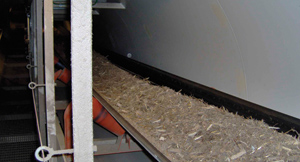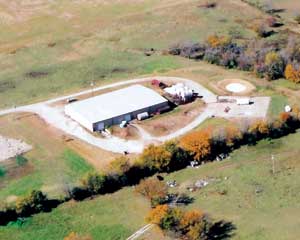May 2008
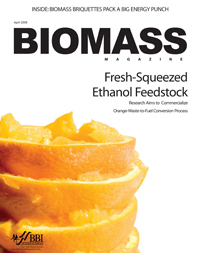 View Full Print Edition
View Full Print EditionBusiness Briefs
Columns

Trends Emerge in Unofficial Biodiesel Survey
By Jessica Sobolik
Featured
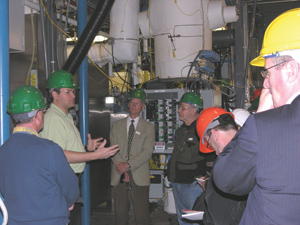
Commercial Biorefinery Update
By Ron Kotrba
The clock is ticking on public acceptance of ethanol as the United States' corn-based industry is under relentless attack. With cellulosic conversion technologies as the ostensible lone saving grace for ethanol, Biomass Magazine takes a look at what fruits the first-quarter ‘08 produced.
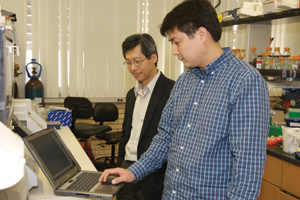
Biobutanol: The Next Big Biofuel?
By Jessica Ebert
It's touted as a superior renewable fuel but challenges have stymied the industrial-scale production of biobutanol. Now, however, Dupont and BP have teamed to develop and commercialize the fuel. This comes as scientists announce advancements in the design of process technologies and the engineering of microbes aimed at improving the economics of mass-producing biobutanol.

Gas Naturally
By Jerry W. Kram
California, according to some dairy commercials, is home to happy cows. So many cows, in fact, that Pacific Gas and Electric Co. estimates that dairy manure makes up 20 percent of the state's available waste biomass for conversion into renewable fuels. The company is aggressively courting developers of anaerobic digestion and biomass gasification projects to provide biomethane for its millions of natural gas customers.
Using Peter Rabbit to Clean Peter's Pond
By Sarah Smith
Purdue University researchers have implanted poplar trees with genetic material from rabbits. The trees are destined for a Herculean task: cleaning up a contaminated site that housed an oil storage facility. The site, called Peter's Pond, was tainted by contaminated oil stored there nearly 40 years ago. The process, called phytoremediation, allows transgenic trees to slurp up underground contaminants.

Big Wood
By Simon Hadlington
Construction will start soon on a giant wood-fueled power station in Wales. But where will all that wood come from? Where will the ash go? And why not use the waste heat?
Mile Marker 105: Syntec Reaches for Economic Efficiency
By Jerry W. Kram
Biodiesel Production Trends Survey 2008
By Craig A. Johnson
For the first time Biodiesel Magazine asks producers exactly how much biodiesel is being produced. The results of our comprehensive survey create an intriguing picture of the industry. Not all producers took our phone calls, but those who did spoke loudly.

Understanding the Post-Injection Problem
By Ron Kotrba
Many diesel engine manufacturers have implemented what's called post-injection, the introduction of fuel late in the combustion cycle, as part of an advanced control strategy to reduce emissions. Biodiesel Magazine looks at how post-injection of biodiesel blends facilitates dilution of engine oil while interacting with oil additives to potentially accelerate engine wear.

A Man on a Mission
By Sarah Smith
When President George W. Bush proclaimed biodiesel the most promising renewable fuel, one that could help meet his 36 billion-gallon goal, he was likely unaware that this mandate would set off a debate now taking place across America: don't build here or anywhere near here.
Will RINs be the Next Environmental Currency?
By Anduin Kirkbride McElroy
Renewable Identification Numbers are becoming increasingly important not just for people in environmental compliance or accounting, but also for those in marketing, investing and sustainability.
The 'FOG' is Lifting
By Kris Bevill
San Francisco is on its way to becoming an even brighter shade of green by starting a program to collect the waste fat, oil and grease (FOG) that clog city sewers and cost taxpayers millions, and turning it into biodiesel to fuel the city's fleet.

Gaining Traction
By Susanne Retka Schill
The nation's underground mines are turning to biodiesel to reduce diesel particulate matter levels to help comply with tighter air quality limits.
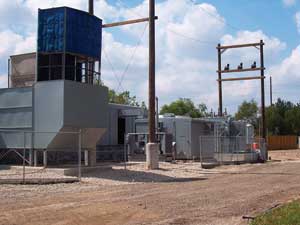
Gallons of Megawatts
By Jerry Kram
Most think of biodiesel as a motor fuel. But it is much more versatile and can drive steamships and, notably, gas turbines. A group in Texas has been pushing the frontiers of biofuel technology to bring electricity to the suburbs of Houston.

Can Biodiesel Power Haiti?
By Eric Kroh
The Western hemisphere's poorest nation faces the same dire problems with fuel cost that the rest of the world encounters. But for once Haiti may have a head start. Its farmers already work with a native plant called jatropha.
Earthrace begins voyage using sustainable fuels
By Timothy Charles Holmseth
Contributions
Coordinating Biomass Research
By Mary-Anne Fiebig
Research into all facets of biomass-supported industries is taking off at schools throughout the country. North Dakota State University is combining and coordinating its efforts to a better biobased program.



